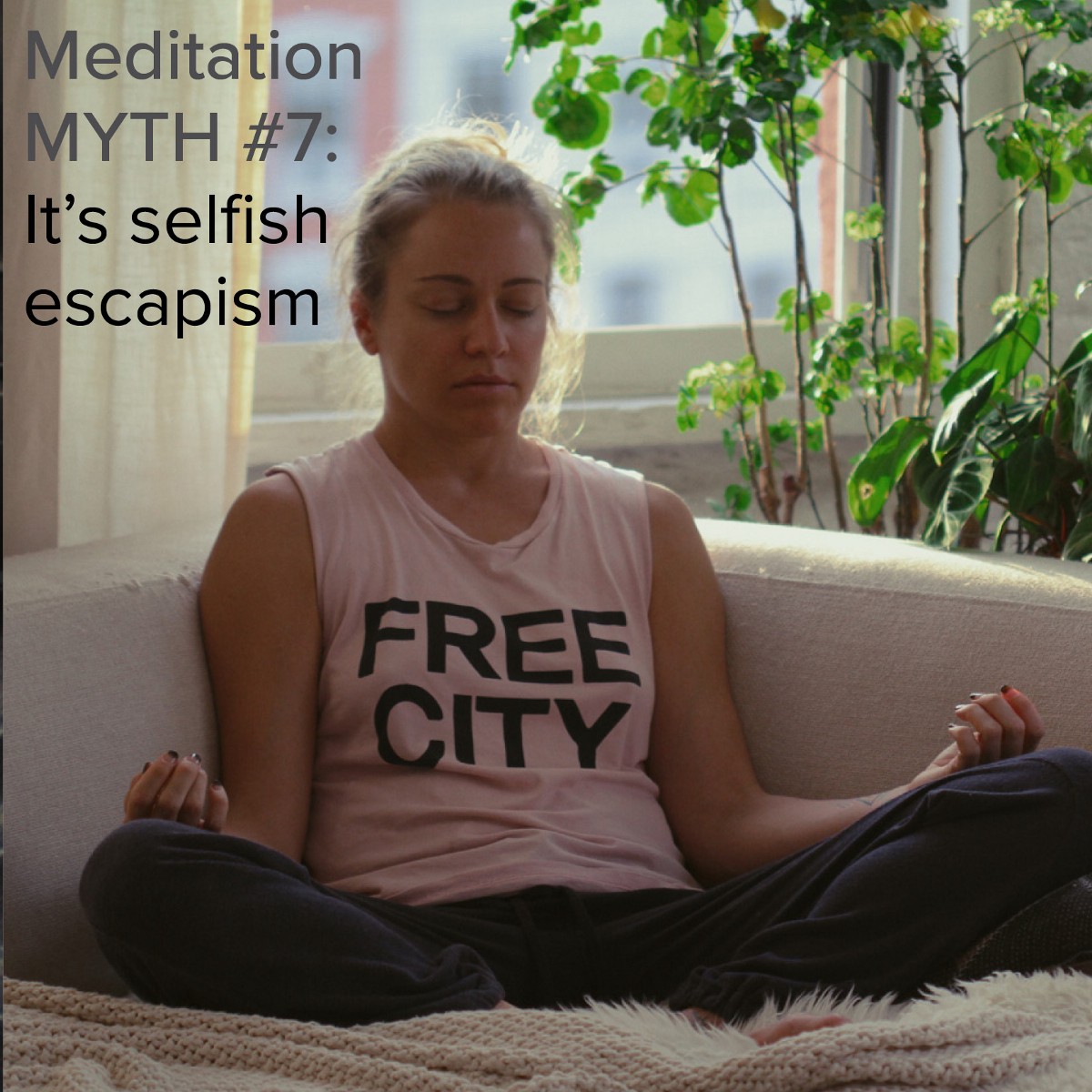8 Common Meditation Myths Debunked
When I first became curious about meditation 10 years ago, I thought, “Where do I start? Do I have to become a monk and shave my head? My mind is crazy — what if I can’t do it or it doesn’t work for me?” I was an anxiety stricken, over-analytical insomniac who clearly needed to meditate.
When I was first introduced to the idea of meditating, I had many preconceived notions about how it worked. They all turned out to be myths that were actually holding me back from learning and developing a daily practice. Once I learned about Vedic Meditation from a trained teacher, the promise of meditation finally became accessible to me. It was a great relief.
So let me debunk 8 of the most common meditation myths for you. Perhaps it’ll help you get started with your daily practice too.
Myth #1: You have to sit still with perfect posture
When you learn Vedic meditation, you get to sit comfortably with your back supported and your arms and legs in any comfortable position. No perfect Buddha poses necessary (what a relief!). You can also adjust your position during meditation; there’s no need to be a statue (thank goodness).
With Vedic Meditation in particular, we’re not required to have perfect posture because this technique works better in a relaxed upright position. Forcing perfect posture can cause strain and engage the mind in thinking, rather than activating the benefits of deep rest and relaxation. So sit back and enjoy!
Myth #2: You have to stop your mind from thinking
Thankfully, thoughts are a part of the meditation process. Thinking is completely natural and one of several legitimate outcomes of correct practice. If this weren’t true, there’s no way I would’ve been able to do it myself.
Did you know the average person has anywhere between 50,000–70,000 thoughts per day? Our minds are designed to think, just as our hearts are designed to beat.
A flood of thoughts will arise during meditation after the body has purified itself of some stress. The clarity, creativity, energy and happiness that comes from meditating is experienced after meditation, once stress has released from the body.
Myth #3: You have to focus
Some styles of meditation require focus and concentration, but in Vedic Meditation we do not focus or concentrate. This was such great news when I first learned about it. It’s the perfect technique for us ADD, creative, super busy or over-analytical types. Instead of meditation being another task for us to do everyday, meditation becomes a time for us to let go of all the activity we engage in.
When we practice Vedic Meditation, we silently repeat a personalized mantra in an effortless way, and spontaneously the mind is able to transcend thought without trying. This technique makes daily meditation approachable and doable for busy, modern people who already spend plenty of time focusing throughout the day.
Myth #4: It takes a LONG time to get good at it
Great news: your mind naturally knows how to meditate already, but has simply forgotten how. The course in Vedic Meditation helps to retrain the intellect to allow the nature of your mind and body to move through the natural process of meditation.
During the course, you learn how to properly meditate using a time-tested technique. It’s a very easy, natural process with a simple set of instructions that only requires an open mind.
Myth #5: It only works in a quiet, peaceful place
There’s no way anyone could meditate in Manhattan if this were true.
It’s possible to learn how to handle noise and interruptions during meditation so that you can do in a taxi, on the subway, a hotel lobby, park or airplane and still enjoy the benefits.
Rather than needing a sanctuary, you can learn how to become the sanctuary so that you can stop, drop and meditate anywhere you feel safe and comfortable.
Myth #6: It’s the same as exercise or making art
Biking and drawing are two of my favorite activities, but they don’t produce the same benefits that meditating does. When we meditate we experience the benefits of stress release through de-excitement of the body, rather than activity that excites the body.
Vedic Meditation effortlessly triggers a state of deeply rested wakefulness. We rest more deeply than during sleep, yet we feel alert inside. This de-excitement allows for deep-rooted stress to purify from the nervous system.
Elevating the heart rate through exercise or focusing the mind in a creative project doesn’t provide the same depth of restfulness as Vedic Meditation. People who meditate daily report having higher quality experiences while exercising and making art, so meditation can bring even greater joy to your favorite activities.
Myth #7: It’s selfish escapism
I had 99 problems, and then meditation solved like 92 of them. I used to think meditation was a way of escaping your problems, but it’s actually the opposite. Instead, meditation melts away stress and all the irrelevant “would’ve,” “should’ve,” “could’ve” and “what if’s?” circling in the mind.
Also, it’s important to note that the purpose of meditation is not to get good at it, but to get better at life. Meditation reduces stress and gives us the ability to handle difficult situations more calmly and solve problems more quickly.
This enriches the quality of our day-to-day life, our work and relationships. When we enjoy life more, it positively impacts everyone we come into contact with. In this way, meditation becomes an selfless act of service for yourself and others.
Myth #8: You have to change your lifestyle or beliefs
When you learn Vedic Meditation, you are not required to change anything about your beliefs or lifestyle. There’s no dogma involved in learning or benefiting from the technique. Vedic knowledge is truly universal and all-inclusive.
Did you know that meditation is both spiritual and scientific?
Vedic Meditation is a spiritual technique, which means that it gives you a direct experience of your essence — that which exists beyond thought and beyond the senses. Imagine if you were to remove all thoughts in your mind right now. What would be left is your essence. It’s the gap between your thoughts.
Meditation doesn’t work on the level of faith or trust, but direct experience. We approach it as research without needing to believe that it’ll work. Like a scientific study, we follow a specific procedure to see what shows up as a result of carrying out the research of twice-daily practice.









